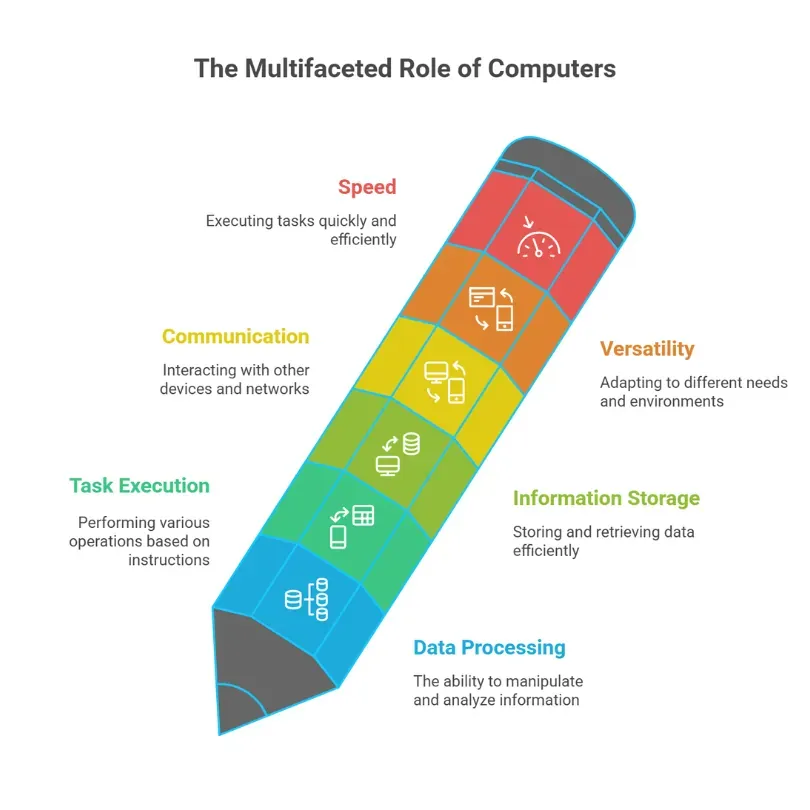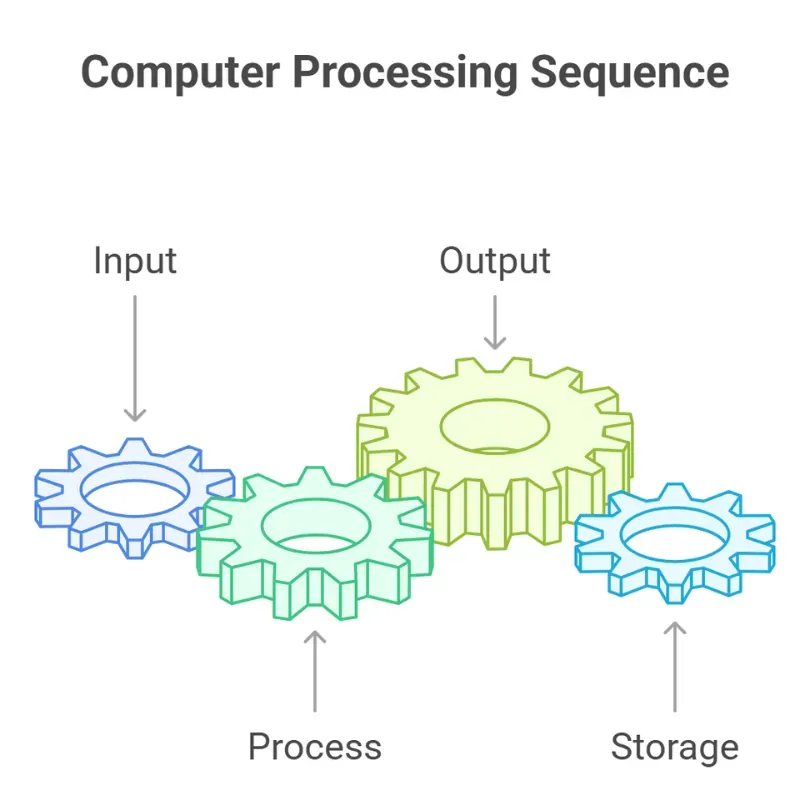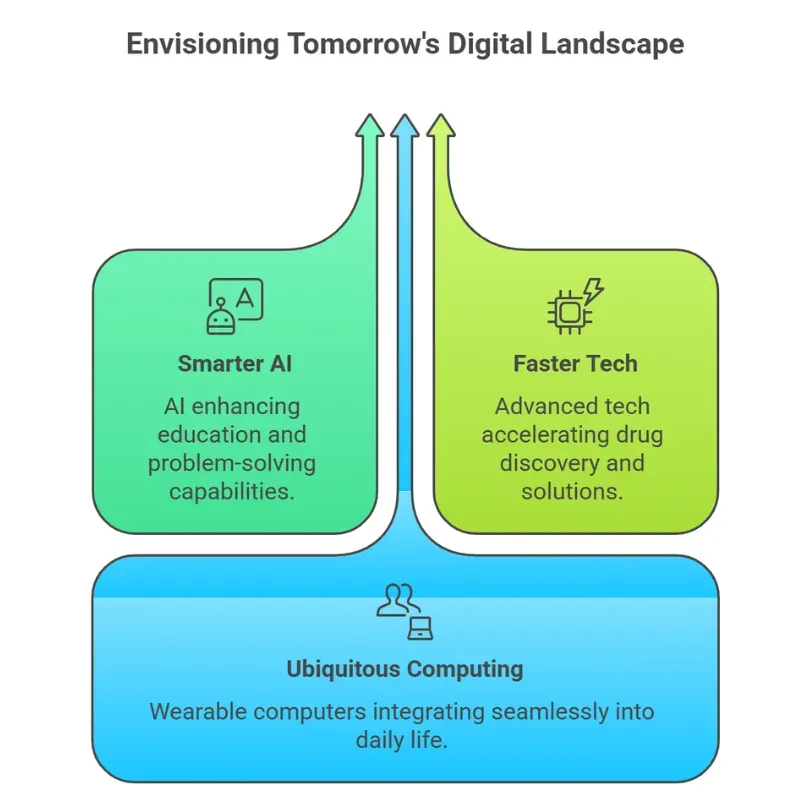Hey there! Have you ever thought about what is a computer actually? If you’re playing games on a laptop, scrolling through your phone, or even using a smartwatch, you’re using a computer. We’ll explain what a computer is in a fun and easy-to-understand way in this blog article.
It’s fantastic for students, people who want to learn more, or anyone who is new to technology. We’ll talk about its parts, how it works, its past, its different varieties, its purposes, and even what the future holds for it, like AI. There is also a useful table to help you figure it out. Let’s get going!
What is a Computer, exactly?
A computer is a piece of electronics that takes in information (like when you type or click), processes it using instructions, and provides you results (like presenting a video or performing math). You can think of it as a really smart assistant that does what you say.

The word “computer” comes from the verb “compute,” which meaning “to do calculate.” Computers do a lot more than just math. They help us learn, play, work, and talk to our friends!
A computer is like a chef in a kitchen: you give it data (the ingredients), it follows a program (the recipe), and it creates you a tasty meal (the outcomes). Computers are in cars, phones, TVs, and even refrigerators!
Where Did Computers Come From?
Not all computers looked like the sleek phone or laptop you have now. Around 2400 BCE, people utilized an abacus, which is a frame with beads, to count. Charles Babbage created the Analytical Engine in the 1800s. It was a huge engine that got its instructions from punched cards. Ada Lovelace, the first programmer, wrote code for it, but it was never made. That’s cool, isn’t it?
During World fight II, computers like ENIAC (which was so big it filled a whole room!) helped with arithmetic during the fight. These contain vacuum tubes in them, which are like parts from old TVs. Transistors made computers smaller and faster in 1947. By the 1970s, microchips, which are like miniature brains, made personal computers (PCs) like the Apple II and IBM PC viable. In the 1980s, Apple’s Macintosh made computers easier to use by adding mouse clicks and colorful screens.
In the 1990s, the Internet came along and connected computers all over the world. We have smart phones, which are like little computers that fit in our pockets, and advanced AI that talks to us. All the time, computers are getting smaller and smarter!
The Parts of a Computer: Hardware and Software
A computer has two main parts: hardware (stuff you can touch) and software (instructions you can’t see).

Hardware: The Physical Bits
- CPU (Central Processing Unit): The Central Processing Unit (CPU) is the brain that does all the work, like running games and programs. Two examples are Intel and AMD chips.
- Memory (RAM): This is like a desk where the computer keeps things it is working on. Having more RAM (like 8GB) means things will go faster.
- Storage: Storage is where files live forever, like on hard disks or SSDs (which are faster).
- Input Devices: Keyboards, mouse, touchscreens, and microphones are all ways to talk to a computer.
- Output Devices: Things like screens, speakers, and printers that enable the computer talk back are called output devices.
- Motherboard: The motherboard is the board that links everything.
Software: The Instructions
- Operating System (OS): The OS is the same as Windows, macOS, or Android. It makes the machine work.
- Apps: Apps are applications that help you perform specific things. For example, Chrome helps you search the web, Minecraft helps you play games, and Word helps you write.
Everything runs on binary code—0s and 1s—that turns words, pictures, or sounds into something computers understand.
How Does a Computer Work?
Computers do four things: they take in data, process it, send it out, and store it.
- Input: You enter in something like (2 + 2).
- Process: The CPU does the math (2 + 2 = 4).
- Output: The screen says “4.”
- Storage: You can save the answer if you want to.

The CPU works in a loop called “fetch-decode-execute.” It obtains instructions, figures them out, and then does them. It’s like reading a recipe, understanding it, and then cooking. To do things like putting your game scores in order, computers also use algorithms, which are sets of steps.
Types of Computers: From Big to Tiny
Computers come in all shapes and sizes. Here’s a table to compare them:
| Type | Size/Power | Examples | Uses | Cost (Approx.) |
|---|---|---|---|---|
| Supercomputer | Huge, super powerful | Frontier (science labs) | Weather forecasts, research | Millions of dollars |
| Mainframe | Big, for businesses | IBM servers | Banks, big companies | Very expensive |
| Personal Computer | Medium, for homes | Laptops, desktops | School, gaming, work | $300-$2000 |
| Smartphone/Tablet | Small, portable | iPhone, iPad, Android | Calls, apps, social media | $100-$1000 |
| Embedded Computer | Tiny, inside devices | In cars, watches, toys | Smart homes, car systems | Low |
| Quantum Computer | Special, experimental | IBM Quantum | Solving hard math, new tech | Not for sale yet |
What Do Computers Do?
There are several ways that computers benefit us:
- School: Taking lessons online, looking things up on Google, or coding on Scratch.
- Fun: Playing games (like Roblox), watching YouTube, or streaming music are all fun things to do.
- Work: Doctors use computers to take X-rays, and businesses use them to sell things.
- Daily Life: Maps via GPS, weather apps, or talking on WhatsApp.
But be careful! Your eyes can get tired from too much screen time, so take pauses.
The Future of Computers
What’s next? Computers are going to grow even cooler:
- Smarter AI: Robots could help in the classroom.
- Faster Tech: Fix large issues, like finding new drugs.
- Everywhere: Wearable computers are everywhere, in glasses or garments.

But there are problems, like keeping data safe, recycling outdated computers, and making technology equitable for everyone.
From big machines to small phones, computers are amazing pieces of technology that have revolutionized the world. It has both hardware, like the CPU, and software, such apps. It takes what you give it, works on it, and then gives you the results.
Whether you’re working, learning, or just having fun, computers make life easier and more fun. AI makes them smarter every day. The next time you use a computer, think about how great technology is.



